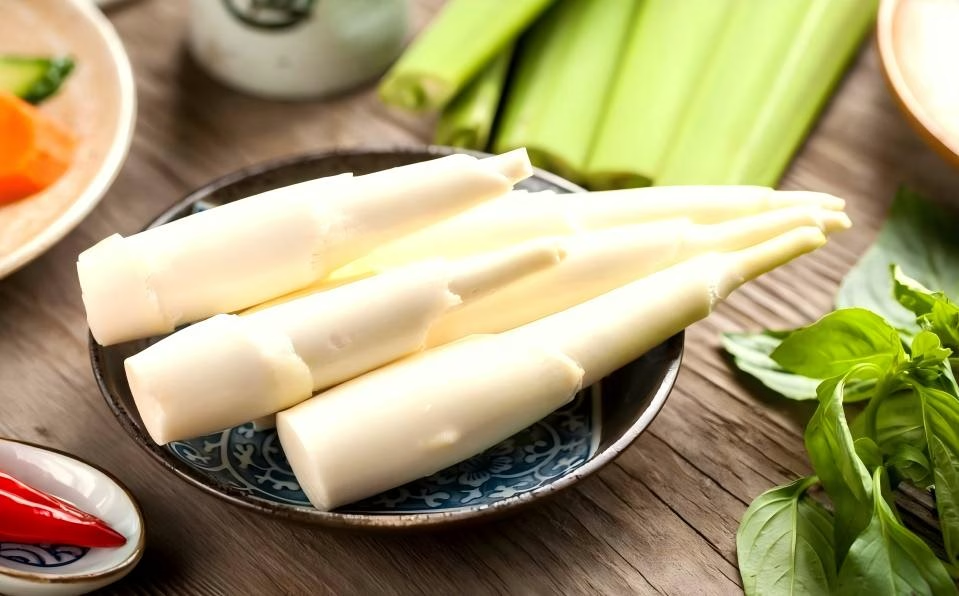Water bamboo shoots are often called “beauty legs” in China because they resemble calves. These tender, white-fleshed water bamboo shoots are perennial aquatic vegetables from the genus Zizania in the Poaceae family. They grow in wetland paddy fields, not in land soil.
How to Choose Delicious Water Bamboo Shoots?
The water bamboo shoot season is concentrated between April and May and August and September. Here are three tips for choosing fresh and tender water bamboo shoots.
The first tip is to choose shoots that aren’t too green at the end and don’t have too many green spots.
The second tip is to choose shoots with a plump, straight middle section and intact shells. Finally, choose shoots with a smooth, non-porous, and water-resistant top. The finer the cut, the better.
Are large or small water bamboo shoots better? In principle, by following the three selection principles mentioned above, bamboo shoots of all sizes will be equally tender and delicious! However, if grilling whole, it’s recommended to choose smaller shoots, which cook faster. If shredding or cutting into sections, both large and small shoots are suitable.
Black spots on the bamboo shoot flesh after cutting, are they still safe to eat?
From a botanical perspective, the seemingly tender and refreshing bamboo shoots are actually a “pathological stem.” During their growth, after the shoots form, they become parasitic and irritated by the fungus “Wild smut.”
This causes the cells of the bamboo shoot to swell, forming a white, crisp, and tender shoot-like stem. This is the part we usually eat—a truly fascinating phenomenon in nature!
The small black spots that appear on the bamboo shoot flesh are actually the parasitic remains of the fungus. It is precisely because of this symbiotic relationship that the bamboo shoots are so delicious. However, in the early stages of infection, the stem tissue of wild rice shoots remains white and soft, making them look good.
As the fungus progresses, it produces a large number of spores, commonly known as “black heart.” While the appearance may deteriorate, the shoots are still safe to eat!


Leave a Reply